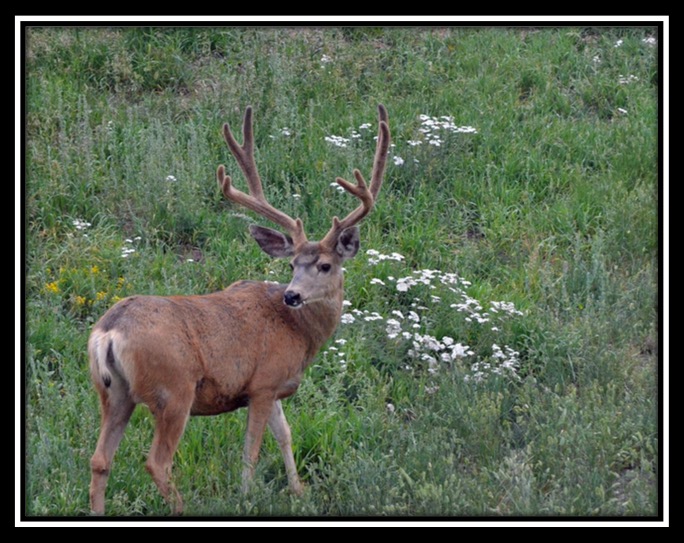
Antler growth in cervids represent one of the most fascinating aspects of our natural world, and to hunters they can also represent one of the more gratifying features of our favorite fall pursuit! Antlers are true bone in their final form, composed of calcium and phosphorus, and shed and regrown every year from pedicels on the skull. This growth process has been likened to cancer in that it represents one of the fastest tissue growth rates in nature! Skin at the top of the pedicel reacts to hormones produced by the deer’s body (testosterone), in a cycle driven by the amount of light from the sun (photoperiod), which causes the growth process to begin, end, and oddly enough, also causes the antlers to drop off in late winter or early spring.
More to the point in that iconic species native to the American west that drives our conservation passion at MDF, the mule deer, this process results in the growth of some pretty impressive headgear that drives many of us to the woods and wilderness each year in search of one of the most sought after trophies in hunting today!
I have the good fortune to live in an area where mule deer are still relatively abundant, and better still to have a resident bachelor group of about a dozen bucks that are regular visitors to our property. I love to photograph them and all the other wildlife that inhabit our wilderness home, and over the course of the last year have been able to document the antler growth cycle in some of these bucks rather extensively. Although it is frowned upon when scientists anthropomorphize the subjects of their study, I work under no such restrictions, and most of our regulars end up with nicknames and display unique personality traits that make them readily identifiable, even from year to year. And although it is subject to change during the course of the rut, it is also pretty easy to follow the “pecking order” among all the age classes.
My passion for photography allows me to hunt “year-round”, and to shoot every deer I see, irrespective of my ability to draw a tag, and I hope you enjoy viewing some of the following shots as much as I enjoyed taking them. I feel like I had a front row seat to see nature in action! These pictures follow two of our more impressive bucks that I was fortunate enough to witness shedding their velvet this fall, and as I write this, one of them, and a newcomer, are chasing does through an early December snowstorm in our back yard! Let me introduce you to a couple of our other “Boys of Summer”, DW and Dano….
First in line is DW (this stands for “Deep and Wide” as we had high expectations of him as he started to develop). I estimated him to be about 4 1⁄2 years old, and he was the number three seed in the local pecking order. He was a very easy-going fellow, and seemed to kind of like having his picture taken. He was the first buck in our group to lose his velvet. When he began this process early in the morning on the first of September, he started by gouging his antlers into the ground around a small sage bush, and then proceeded to whip up on a couple of pine trees, moved on to some small, dead aspens for the finishing touches, showed off the results to some of his buds, and then returned to raid one of our bird feeders. The whole process took less than 15 minutes!
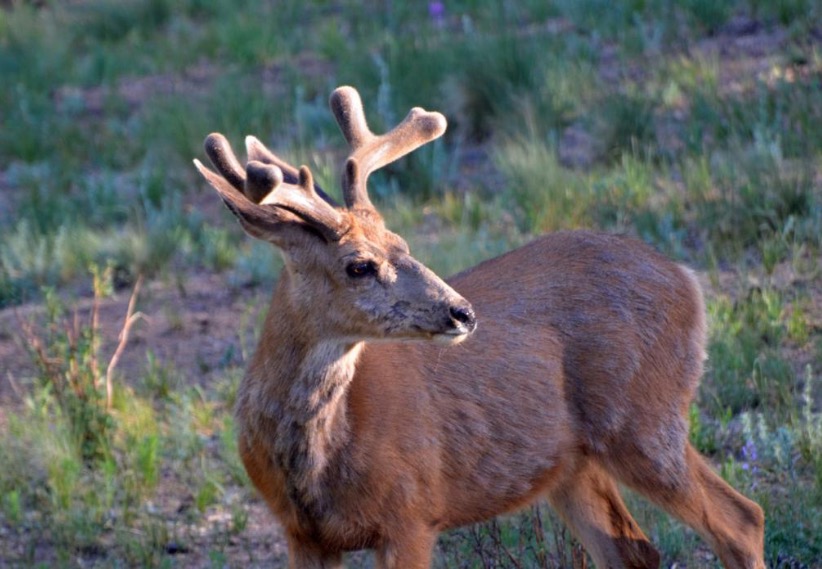
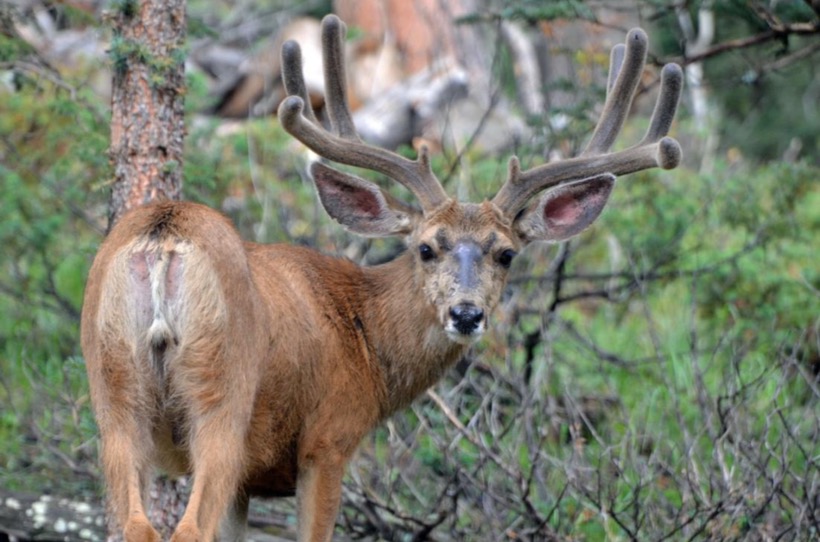
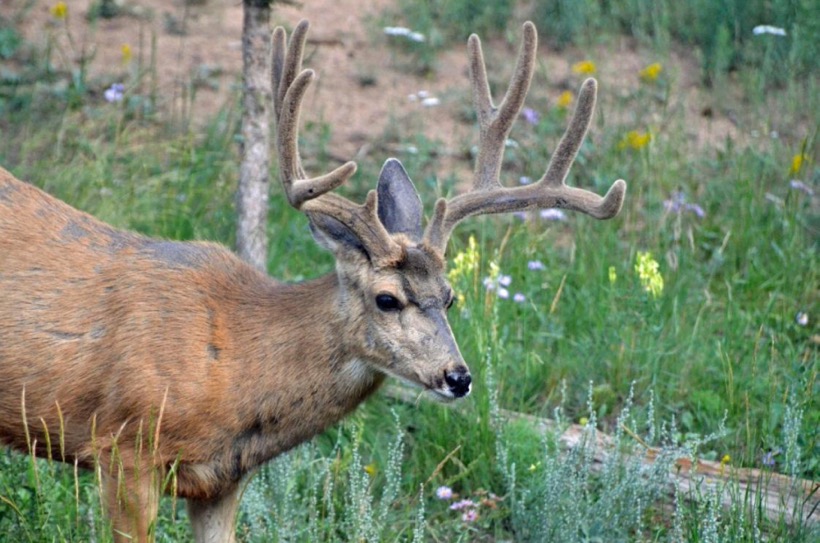
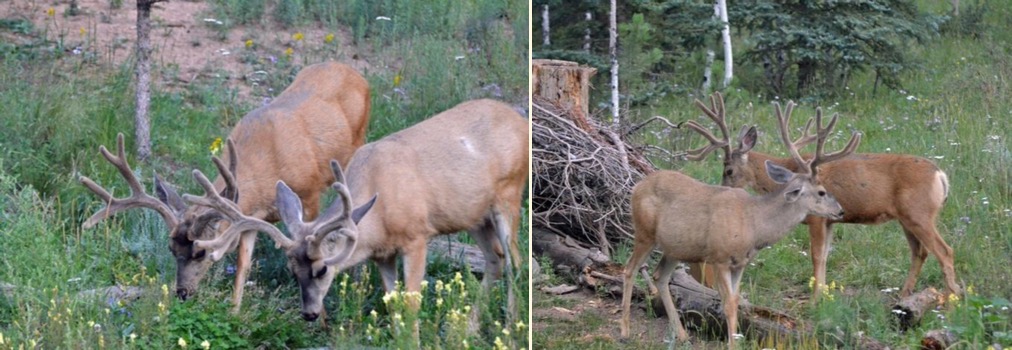
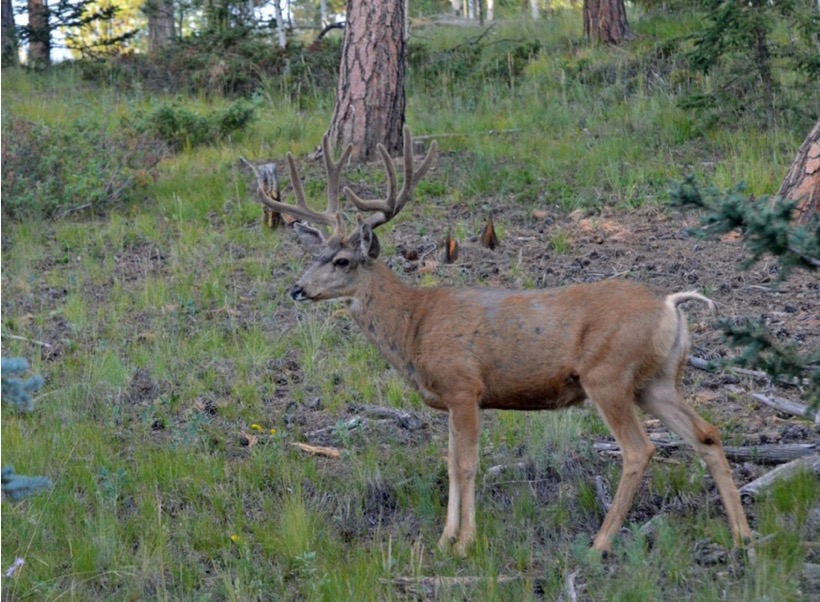
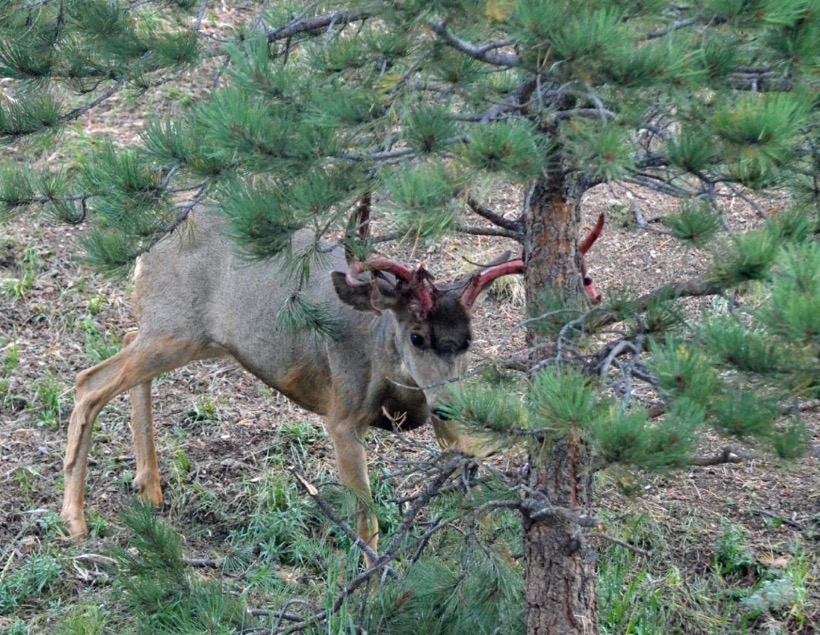
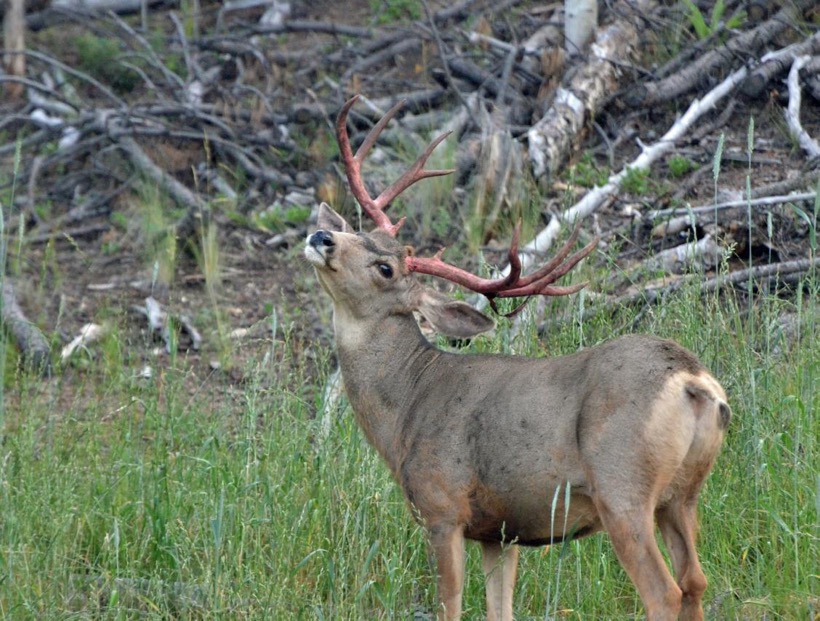
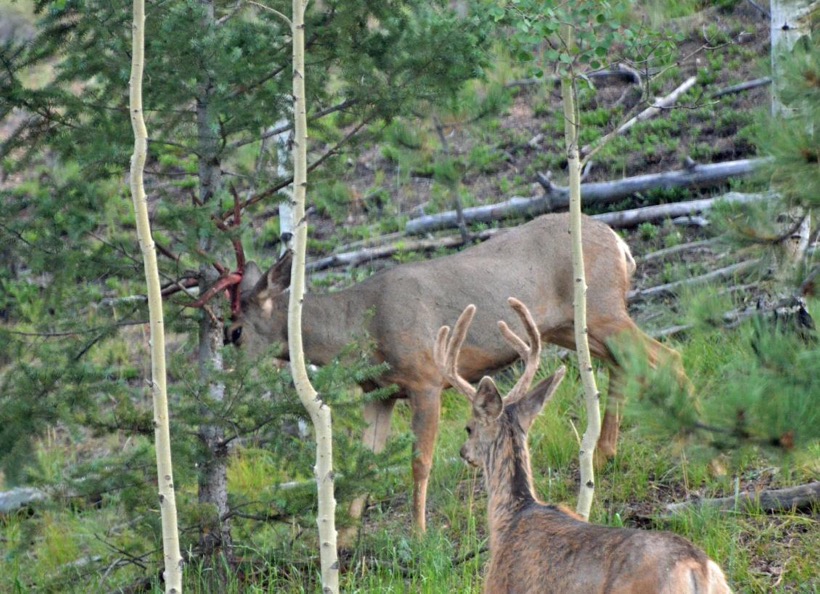
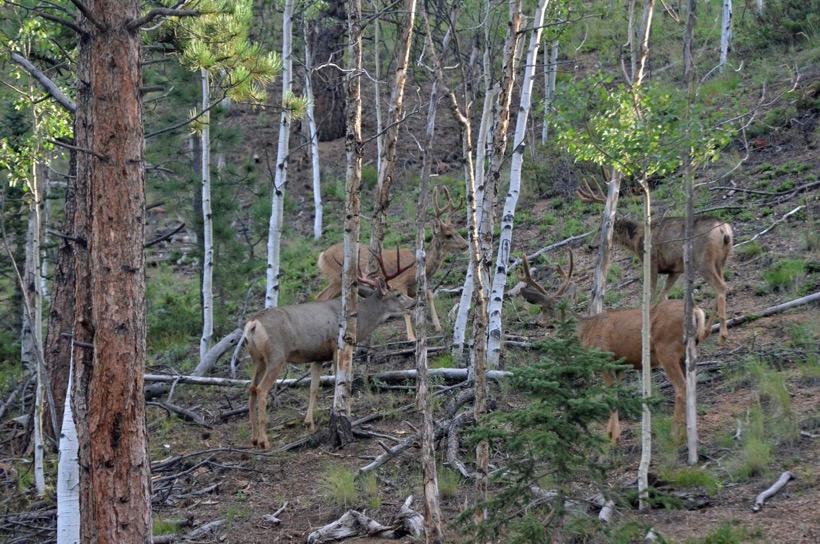
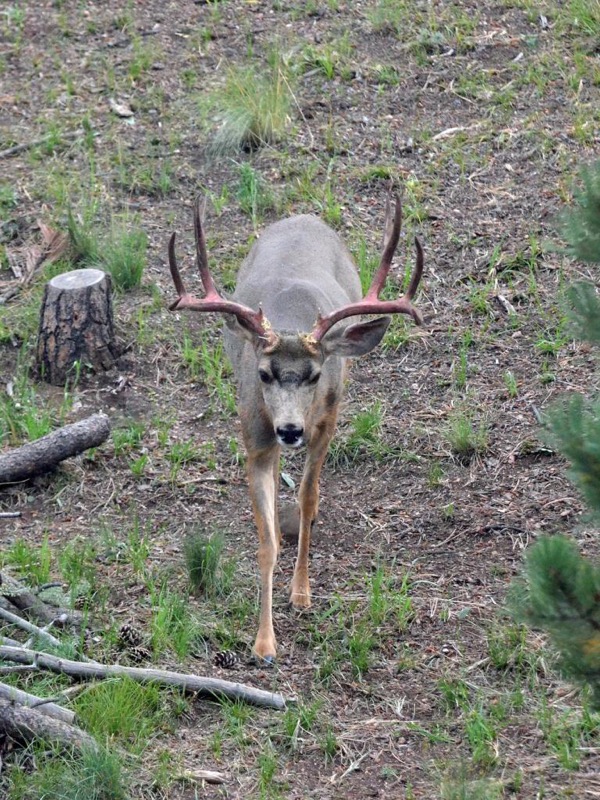
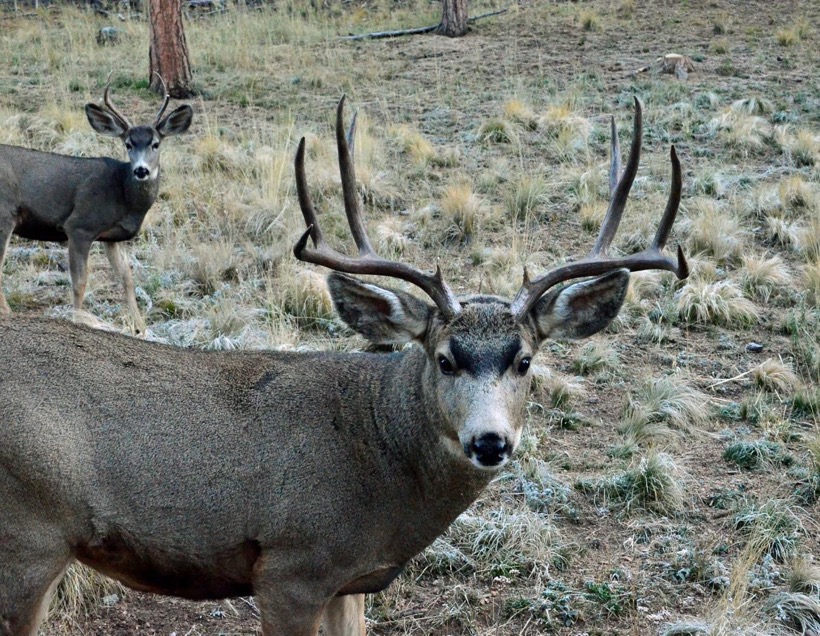
Now let me introduce you to Dano. Dano is the top dog in this bachelor group, and was for most of last year as well. Late in the rut last season he went missing for a few days, and came back severely beaten up with several broken points and a hole poked in his side (the scar is still visible in some of these photos), obviously having come out on the short end of a battle royale! I’m not sure who whipped him, and one of our other bucks took over breeding duties for the remainder of the rut last year, but Dano reasserted himself over the winter and spring. While he doesn’t have the biggest rack, he does come with a bit of an attitude which seems to serve him well with the ladies. I believe he is probably 5 ½ or maybe 6 ½ years old.
Dano decided to shed his velvet on the 14th of September, and much to our chagrin spent better than two hours whipping the snot out of dozens of trees on our property in the process. He has also felt obligated to continue this process from time to time through the breeding season so our yard is full of rubs! It did make for some cool pictures though!
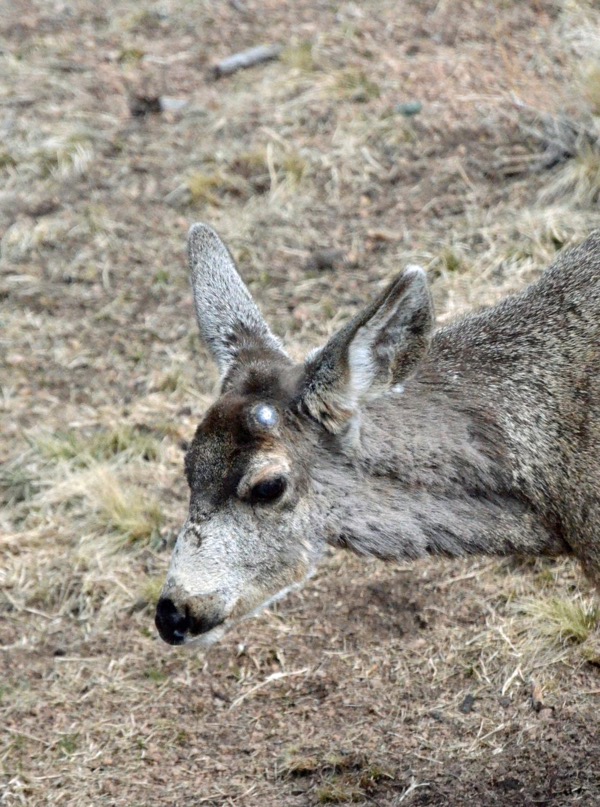
and survived another winter at 9000 feet here in Colorado! The pedicles have just about
scabbed over, and for the most part last year’s battle scars have healed.
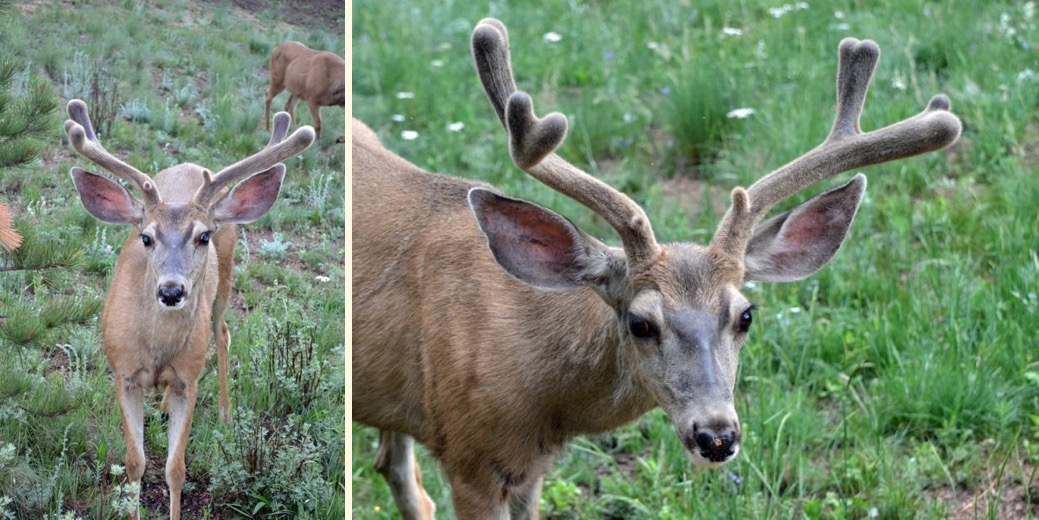

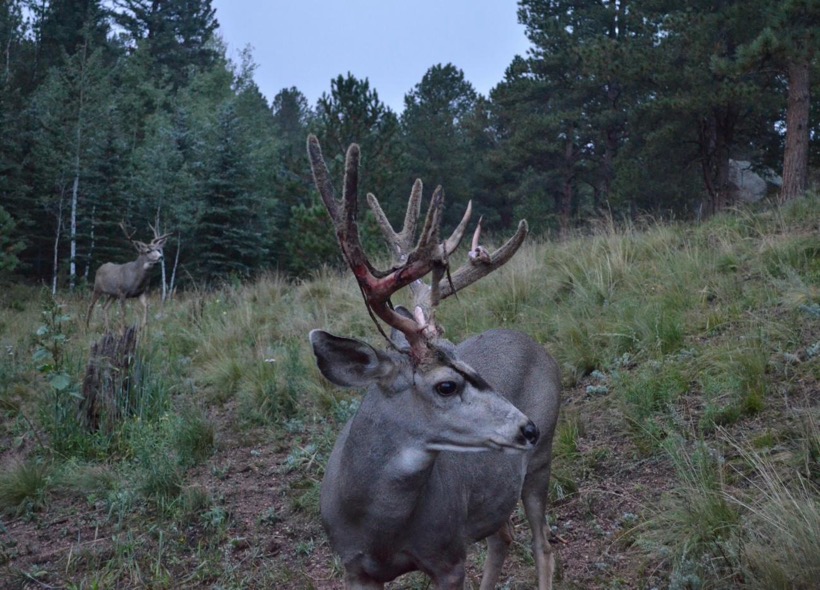
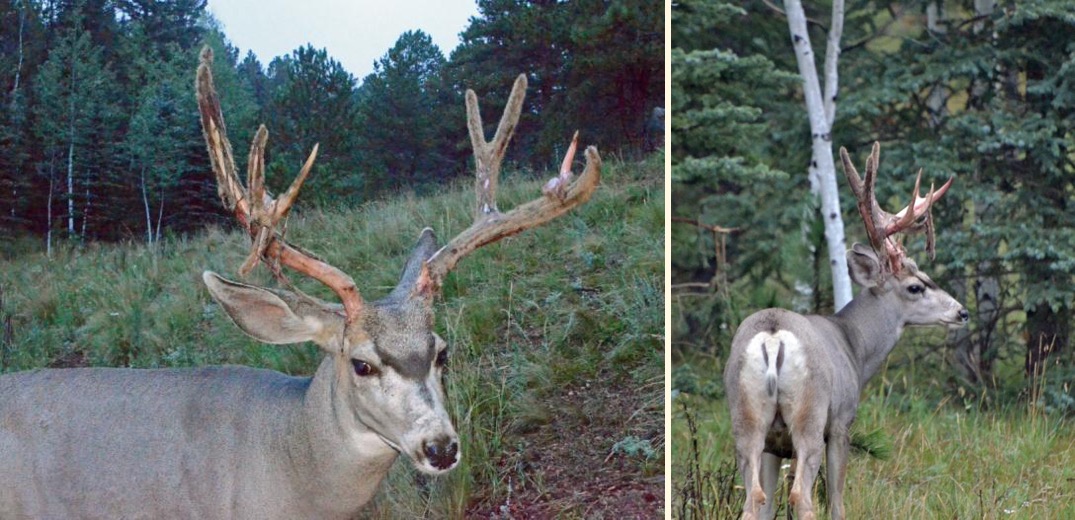
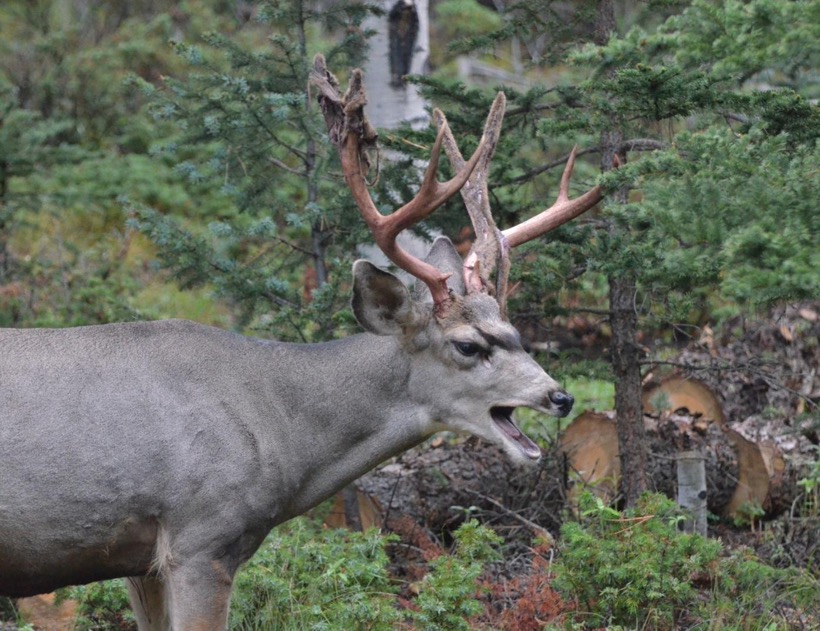
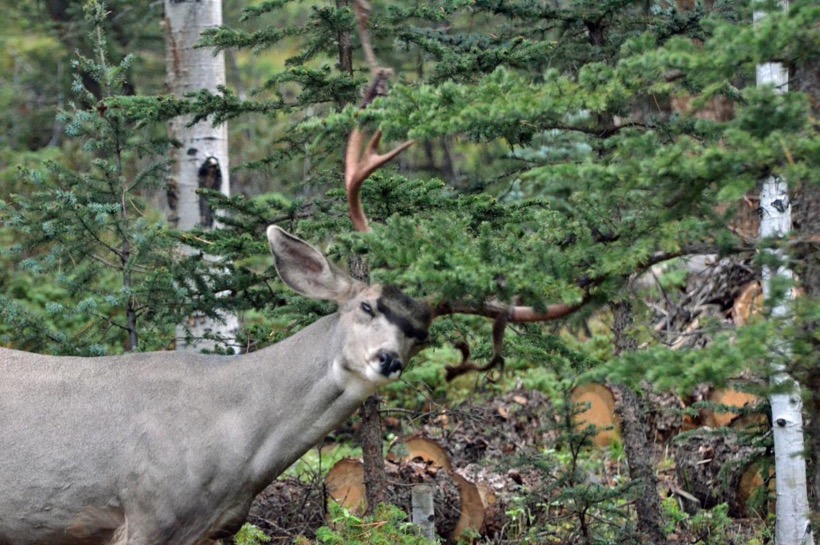

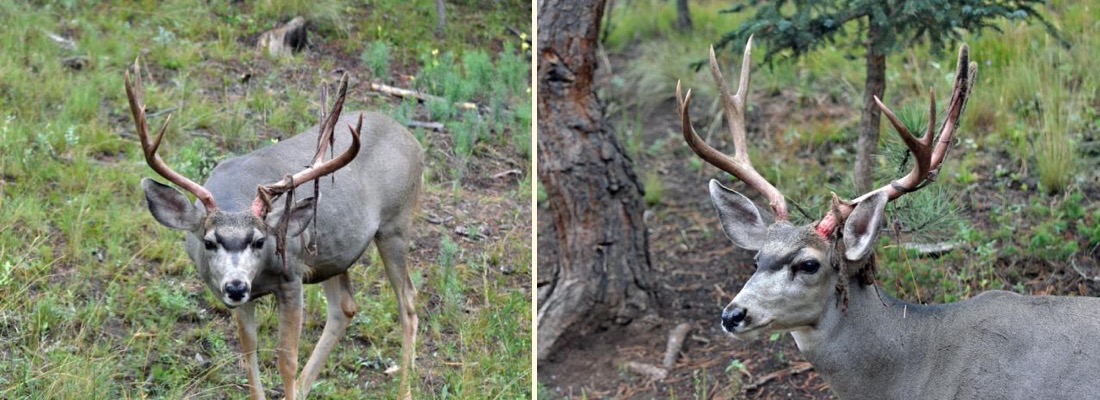
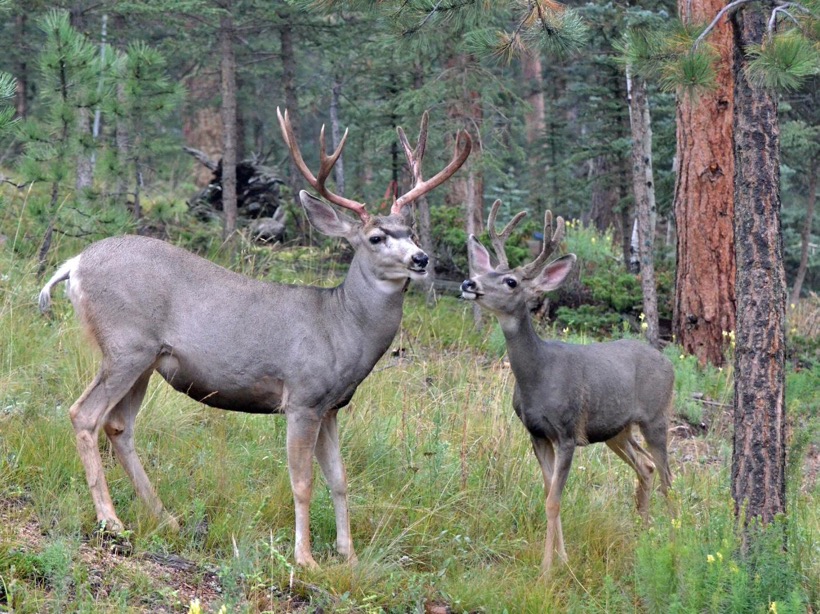
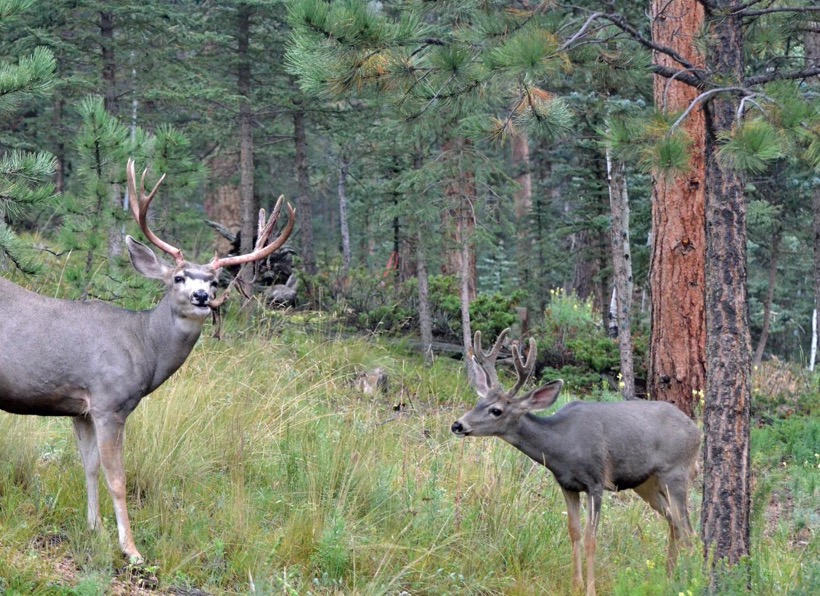
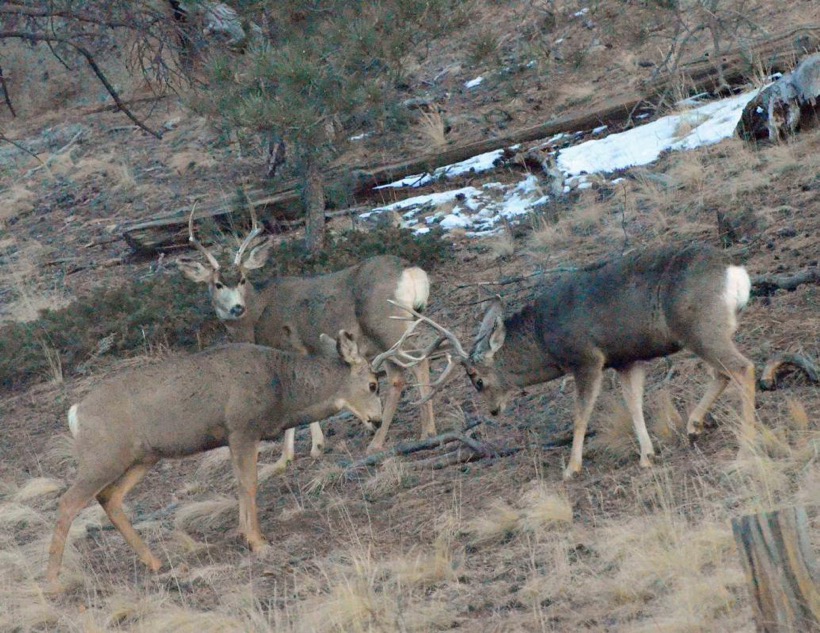
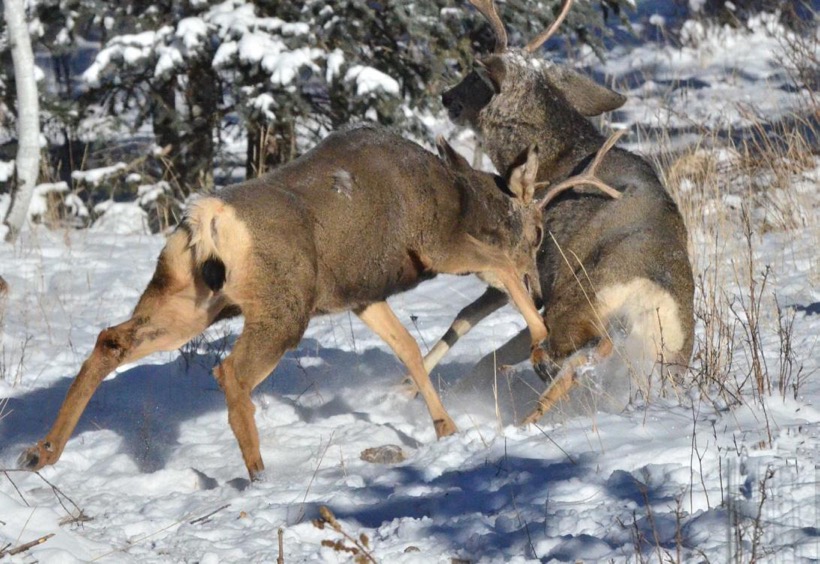
Mule Deer Foundation
Magazine Editor
1939 S. 4130 West, Suite H
Salt Lake City, UT, 84104
To whom it may concern,
Please accept the enclosed document for publication consideration in your MDF magazine. I have enclosed the document in digital form on a disk, and a printed version for ease of viewing. If you decide this article is of interest to you I can supply the photographs in a larger file format (most are from 3-10 meg), and I can be reached at the following points if you have any questions.
Best Regards,
David Wetzel
Phone: 719-748-1289
